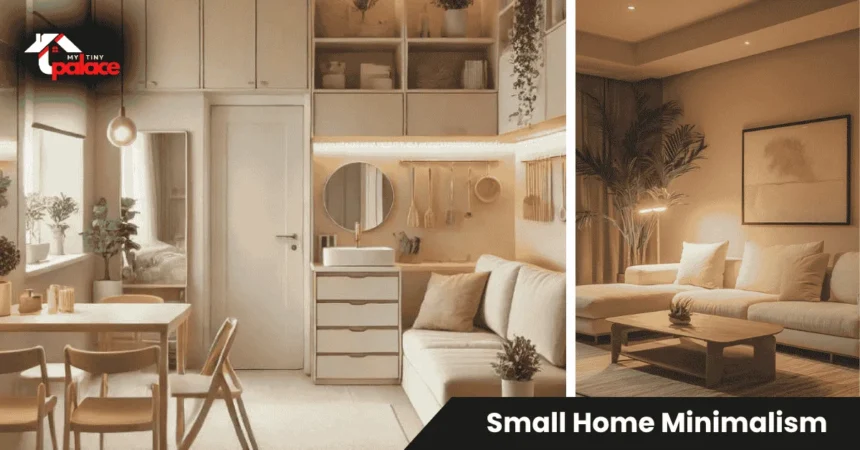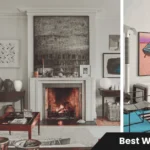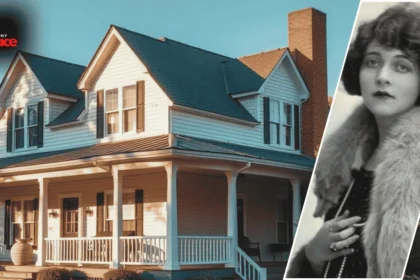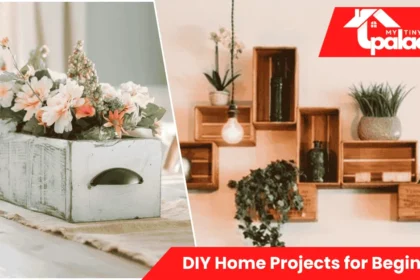Quick summary
You live in a small home or apartment and want it to feel bigger, calmer, and more functional. This guide gives you 20 practical minimalist decor ideas grouped by purpose—from visual tricks that expand your space to multi-use furniture and storage hacks. Whether you rent or own, you’ll find budget-friendly options and quick wins you can tackle this weekend.
- Quick summary
- 20 Minimalist Decor Ideas for Small Homes
- Why minimalist decor matters in small homes
- Space-saving storage solutions
- How to choose the right changes for your layout
- Step-by-step: implement three high-impact changes
- Costs, time, and tools
- Pros & cons—who should try these ideas
- Quick summary + next steps
20 Minimalist Decor Ideas for Small Homes
Visual space tricks—color, light, and reflection
Light colors make walls recede and ceilings feel taller. Paint your walls in soft whites, warm beiges, or pale grays to create visual depth without spending much. Add a large mirror opposite your main window to bounce natural light around the room and double the perceived space. Replace heavy, dark curtains with light sheers or simple linen panels that let daylight filter through. Install a dimmer switch on overhead lights so you can adjust brightness for different moods (renters can use plug-in smart bulbs instead). Choose one focal wall in a slightly deeper neutral tone to add warmth without breaking up the space.
Multi-use furniture and layout hacks
Swap your bulky coffee table for a set of nesting tables that tuck away when you need floor space for yoga or guests. Pick a sofa bed or a daybed with storage drawers underneath—it sleeps visitors and hides extra bedding. Use a narrow console table (24–30 inches deep) behind your sofa instead of a full sideboard; it gives you surface space without blocking circulation. Invest in an ottoman with hidden storage for throws, magazines, or toys. Choose dining chairs that stack or fold flat so you can store them in a closet when not in use.
Hidden and vertical storage solutions
Mount floating shelves above eye level to store books or display items without eating floor space. Install a pegboard or wall-mounted rail system in your entryway for coats, bags, and keys (use adhesive-backed versions if you rent). Slide shallow under-bed storage boxes for seasonal clothes or shoes—aim for boxes under 6 inches tall so they stay hidden. Hang a slim, wall-mounted drop-leaf table in your kitchen that folds down when you’re cooking and opens for meals. Add vertical dividers inside deep drawers so small items don’t get lost.
Surface treatments and textiles to add warmth
Layer a textured wool or cotton rug over bare floors to define your living zone without permanent changes. Use removable wallpaper or peel-and-stick tiles in a single accent area, like behind your bed or inside a bookshelf. Choose one or two throw pillows in warm tones (rust, terracotta, mustard) to soften neutral furniture. Hang lightweight canvas art or fabric tapestries with removable hooks instead of drilling holes. Keep window treatments simple—one rod, one fabric type per room—to avoid visual clutter.
Entryway, kitchen, and bathroom small-space fixes
Install a narrow shoe rack (under 12 inches deep) by your front door to keep footwear tidy without blocking the hallway. Use magnetic strips or adhesive hooks inside kitchen cabinet doors to hang measuring spoons, pot lids, or cleaning tools. Replace a bulky bathroom vanity with a wall-mounted sink and a single floating shelf underneath for essentials. Hang an over-the-door organizer in your pantry or bathroom for toiletries, spices, or cleaning supplies. Add a small tension rod under your kitchen sink to hang spray bottles and free up the cabinet floor.
Why minimalist decor matters in small homes
Minimalist decor helps you see and use your space better. When you remove unnecessary items, you instantly create room to move, breathe, and think. Less clutter means faster cleaning—you can vacuum or dust in half the time when surfaces stay clear. A calm, edited space also improves your mental state; studies show that visual clutter increases stress and makes it harder to focus.
You’ll find hosting easier when guests have a clear place to sit and set down a drink. You’ll sleep better when your bedroom isn’t crowded with piles of clothes or stacks of magazines. Small changes like swapping one bulky armchair for a slim accent chair can open up a walking path and make the whole room feel lighter. The goal isn’t to live in an empty box—it’s to keep only what you use and love.
Space-saving storage solutions
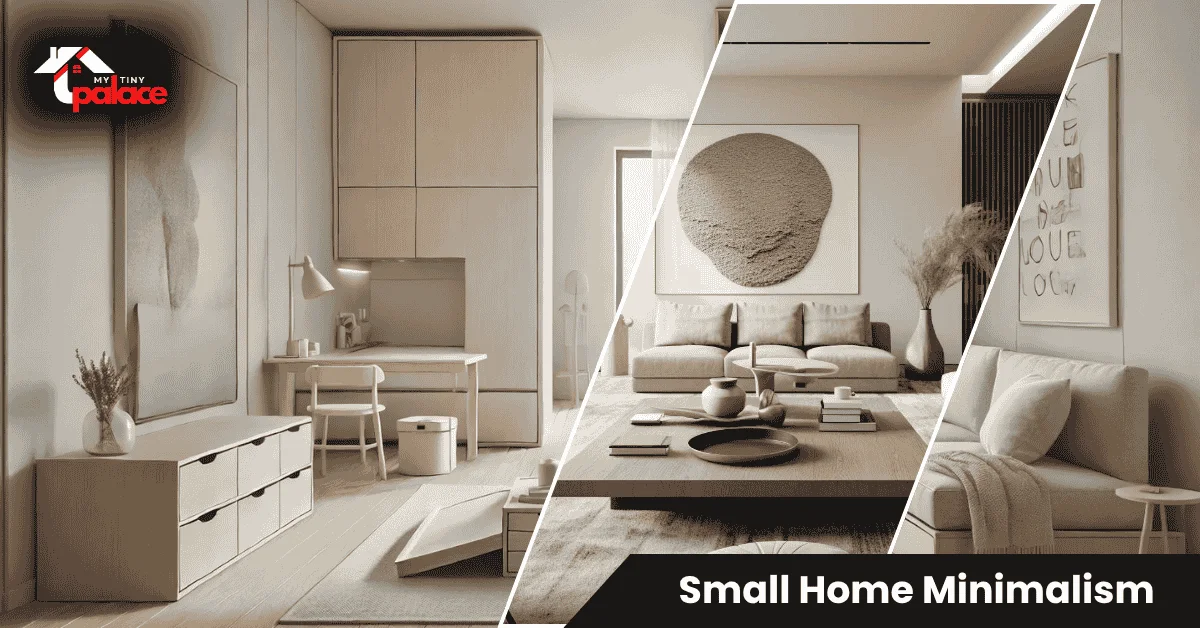
Vertical shelving and nesting tables maximize floor space while keeping essential items within easy reach.
Choose storage based on what you need to hide. Open shelving works for items you use daily—dishes, books, or plants—but closed cabinets or drawers are better for items you want out of sight. Measure your wall depth before buying; most floating shelves need at least 8–10 inches of clearance, but shallow options (6 inches) work well for spices or small decor.
Vertical storage is your best friend in tight spaces. A tall bookshelf (6–7 feet high) holds more than a low, wide unit and draws the eye up. Use tension rods, adhesive hooks, or freestanding racks if you rent and can’t drill. Under-bed storage should be shallow enough to slide easily but sturdy enough to hold seasonal items without sagging. Modular cube systems let you build custom storage that fits odd corners or alcoves. Always leave a 30-inch circulation path between furniture so you can walk comfortably.
How to choose the right changes for your layout
Start by measuring your room. Write down the length and width, then mark windows, doors, and outlets. Think about how you move through the space—do you bump into furniture or squeeze past the bed? Your circulation path should be clear and at least 30 inches wide.
Prioritize lighting first. Dark rooms feel smaller, so add a floor lamp or swap in brighter bulbs before you buy new furniture. Next, tackle storage—if clutter piles up on counters, you need drawers or bins. Finally, consider furniture size. A loveseat might work better than a full sofa; a round table takes up less visual space than a square one.
Use painter’s tape to mark out furniture footprints on the floor. Live with the tape for a day to see if the layout works. Focus on one zone at a time—start with your living room or bedroom rather than trying to redo the whole apartment at once.
When shopping for new pieces, explore Home Decor Ideas for Every Budget to find options that match your financial goals and aesthetic preferences.
Step-by-step: implement three high-impact changes
Swap heavy curtains for light, airy window treatments.
Remove your old curtains and measure the window width and height. Add 4–6 inches on each side so the rod extends past the frame—this makes the window look larger. Buy simple linen or cotton panels in white, cream, or soft gray. Install the rod (or use a tension rod for renters) and hang the panels on basic rings or clips. Keep the fabric loose and let it pool slightly on the floor for a relaxed look.
Install vertical shelving safely.y
Mark where you want the shelves—at least 12 inches apart for books, closer for small decor. Use a level to draw a straight line, then drill pilot holes and insert wall anchors rated for the weight you’ll add. Screw in the shelf brackets and test them by pushing down hard before placing items. Renters should use adhesive-backed shelves rated for at least 10 pounds or freestanding ladder-style shelves that lean against the wall. If you’re unsure about wall studs or weight limits, hire a handyman.
Replace bulky furniture with multi-use pieces
Measure your current coffee table and note how much floor space it occupies. Shop for nesting tables, a storage ottoman, or a narrow bench that serves the same function but folds, stacks, or hides things inside. Sell or donate your old piece before the new one arrives so you’re not tempted to keep both. Arrange the new furniture and test the walking path—you should be able to move around it without turning sideways.
Safety note: For any drilling, structural changes, or electrical work, check your lease and consult a licensed professional if you’re unsure. Use the right anchors for your wall type (drywall, plaster, or concrete) to avoid damage.
Costs, time, and tools
| Budget Level | Example Change | Est. Cost | Time | Tools Needed |
|---|---|---|---|---|
| Low | Light curtains, adhesive hooks | $20–$50 | 1 hour | Scissors, measuring tape |
| Medium | Floating shelves, under-bed bins | $50–$150 | 2–3 hours | Drill, level, anchors |
| High | Multi-use sofa bed, custom shelving | $300–$800 | 4–6 hours | Drill, saw, assembly tools |
Your return on investment shows fast. Swapping drapes for sheers costs $30 but makes the room feel twice as bright. Adding vertical shelves for $80 clears your floor and gives you 12 square feet of usable surface. Even high-ticket items like a sofa bed pay off if you host guests monthly and save on hotel costs.
Pros & cons—who should try these ideas
Pros: Minimalist decor makes small homes feel spacious, cuts cleaning time in half, and creates a calm environment that’s easier to maintain. Most changes are reversible and budget-friendly, so renters can try them without losing a security deposit.
Cons: If you go too minimal too fast, your space might feel cold or unlived-in. Some ideas require upfront costs (shelving, furniture), and you need to stay disciplined about not bringing in new clutter.
These ideas work best for renters, studio apartment owners, and anyone who wants a low-maintenance home that still feels welcoming and functional.
Styling your minimalist space across seasons
The beauty of a minimalist foundation is that it pairs seamlessly with seasonal updates. Explore Seasonal Home Decor ideas to refresh your space with spring pastels, summer brights, autumn tones, or winter textures without adding clutter. Swapping a few throw pillows or rotating lightweight art keeps your space feeling fresh without overwhelming your neutral base.
Understanding design style foundations
If you’re curious about how minimalism compares to other approaches, discover Modern vs Traditional Decor Styles to understand what works best for your lifestyle and preferences.
Quick summary + next steps
Small swaps create big differences. Start by measuring one room and picking one low-cost fix—swap your curtains, add a floating shelf, or clear under your bed. Try one idea this weekend and see how much lighter your space feels. Once you experience the change, you’ll want to keep going. Check affordable storage bins and multi-use furniture online to find pieces that fit your exact measurements.






